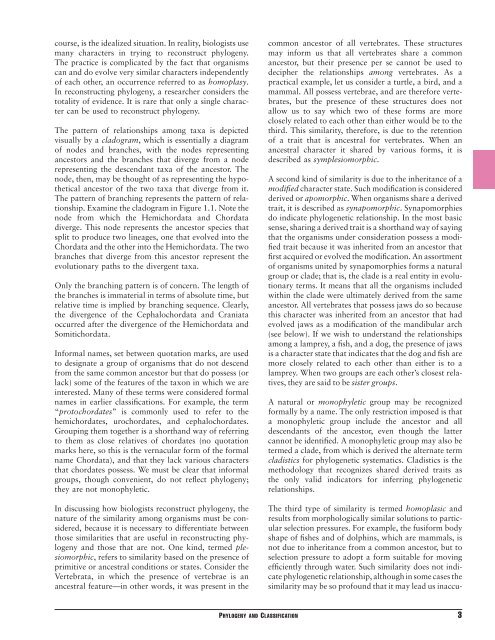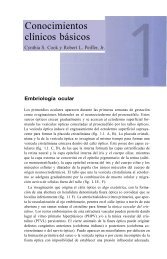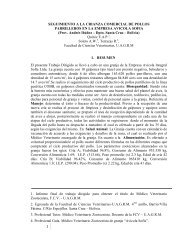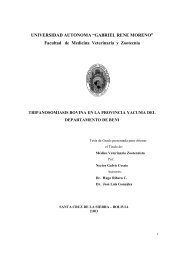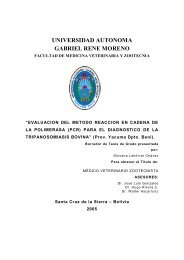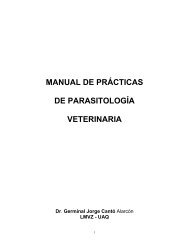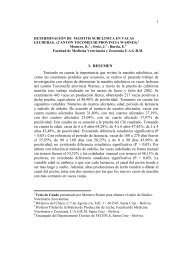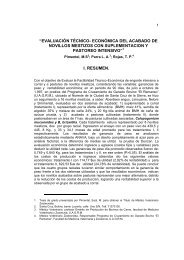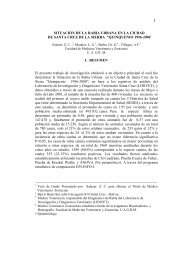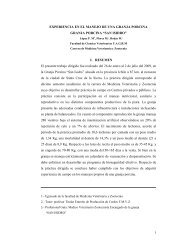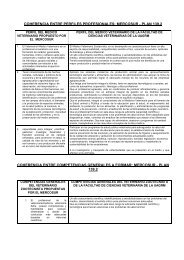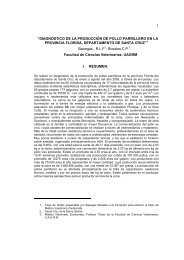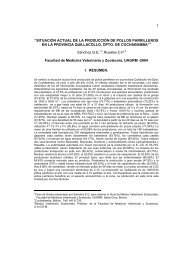The Dissection of Vertebrates A Laboratory Manual
The Dissection of Vertebrates A Laboratory Manual
The Dissection of Vertebrates A Laboratory Manual
Create successful ePaper yourself
Turn your PDF publications into a flip-book with our unique Google optimized e-Paper software.
course, is the idealized situation. In reality, biologists use<br />
many characters in trying to reconstruct phylogeny.<br />
<strong>The</strong> practice is complicated by the fact that organisms<br />
can and do evolve very similar characters independently<br />
<strong>of</strong> each other, an occurrence referred to as homoplasy.<br />
In reconstructing phylogeny, a researcher considers the<br />
totality <strong>of</strong> evidence. It is rare that only a single character<br />
can be used to reconstruct phylogeny.<br />
<strong>The</strong> pattern <strong>of</strong> relationships among taxa is depicted<br />
visually by a cladogram, which is essentially a diagram<br />
<strong>of</strong> nodes and branches, with the nodes representing<br />
ancestors and the branches that diverge from a node<br />
representing the descendant taxa <strong>of</strong> the ancestor. <strong>The</strong><br />
node, then, may be thought <strong>of</strong> as representing the hypothetical<br />
ancestor <strong>of</strong> the two taxa that diverge from it.<br />
<strong>The</strong> pattern <strong>of</strong> branching represents the pattern <strong>of</strong> relationship.<br />
Examine the cladogram in Figure 1.1. Note the<br />
node from which the Hemichordata and Chordata<br />
diverge. This node represents the ancestor species that<br />
split to produce two lineages, one that evolved into the<br />
Chordata and the other into the Hemichordata. <strong>The</strong> two<br />
branches that diverge from this ancestor represent the<br />
evolutionary paths to the divergent taxa.<br />
Only the branching pattern is <strong>of</strong> concern. <strong>The</strong> length <strong>of</strong><br />
the branches is immaterial in terms <strong>of</strong> absolute time, but<br />
relative time is implied by branching sequence. Clearly,<br />
the divergence <strong>of</strong> the Cephalochordata and Craniata<br />
occurred after the divergence <strong>of</strong> the Hemichordata and<br />
Somitichordata.<br />
Informal names, set between quotation marks, are used<br />
to designate a group <strong>of</strong> organisms that do not descend<br />
from the same common ancestor but that do possess (or<br />
lack) some <strong>of</strong> the features <strong>of</strong> the taxon in which we are<br />
interested. Many <strong>of</strong> these terms were considered formal<br />
names in earlier classifications. For example, the term<br />
“protochordates” is commonly used to refer to the<br />
hemichordates, urochordates, and cephalochordates.<br />
Grouping them together is a shorthand way <strong>of</strong> referring<br />
to them as close relatives <strong>of</strong> chordates (no quotation<br />
marks here, so this is the vernacular form <strong>of</strong> the formal<br />
name Chordata), and that they lack various characters<br />
that chordates possess. We must be clear that informal<br />
groups, though convenient, do not reflect phylogeny;<br />
they are not monophyletic.<br />
In discussing how biologists reconstruct phylogeny, the<br />
nature <strong>of</strong> the similarity among organisms must be considered,<br />
because it is necessary to differentiate between<br />
those similarities that are useful in reconstructing phylogeny<br />
and those that are not. One kind, termed plesiomorphic,<br />
refers to similarity based on the presence <strong>of</strong><br />
primitive or ancestral conditions or states. Consider the<br />
Vertebrata, in which the presence <strong>of</strong> vertebrae is an<br />
ancestral feature—in other words, it was present in the<br />
common ancestor <strong>of</strong> all vertebrates. <strong>The</strong>se structures<br />
may inform us that all vertebrates share a common<br />
ancestor, but their presence per se cannot be used to<br />
decipher the relationships among vertebrates. As a<br />
practical example, let us consider a turtle, a bird, and a<br />
mammal. All possess vertebrae, and are therefore vertebrates,<br />
but the presence <strong>of</strong> these structures does not<br />
allow us to say which two <strong>of</strong> these forms are more<br />
closely related to each other than either would be to the<br />
third. This similarity, therefore, is due to the retention<br />
<strong>of</strong> a trait that is ancestral for vertebrates. When an<br />
ancestral character it shared by various forms, it is<br />
described as symplesiomorphic.<br />
A second kind <strong>of</strong> similarity is due to the inheritance <strong>of</strong> a<br />
modified character state. Such modification is considered<br />
derived or apomorphic. When organisms share a derived<br />
trait, it is described as synapomorphic. Synapomorphies<br />
do indicate phylogenetic relationship. In the most basic<br />
sense, sharing a derived trait is a shorthand way <strong>of</strong> saying<br />
that the organisms under consideration possess a modified<br />
trait because it was inherited from an ancestor that<br />
first acquired or evolved the modification. An assortment<br />
<strong>of</strong> organisms united by synapomorphies forms a natural<br />
group or clade; that is, the clade is a real entity in evolutionary<br />
terms. It means that all the organisms included<br />
within the clade were ultimately derived from the same<br />
ancestor. All vertebrates that possess jaws do so because<br />
this character was inherited from an ancestor that had<br />
evolved jaws as a modification <strong>of</strong> the mandibular arch<br />
(see below). If we wish to understand the relationships<br />
among a lamprey, a fish, and a dog, the presence <strong>of</strong> jaws<br />
is a character state that indicates that the dog and fish are<br />
more closely related to each other than either is to a<br />
lamprey. When two groups are each other’s closest relatives,<br />
they are said to be sister groups.<br />
A natural or monophyletic group may be recognized<br />
formally by a name. <strong>The</strong> only restriction imposed is that<br />
a monophyletic group include the ancestor and all<br />
descendants <strong>of</strong> the ancestor, even though the latter<br />
cannot be identified. A monophyletic group may also be<br />
termed a clade, from which is derived the alternate term<br />
cladistics for phylogenetic systematics. Cladistics is the<br />
methodology that recognizes shared derived traits as<br />
the only valid indicators for inferring phylogenetic<br />
relationships.<br />
<strong>The</strong> third type <strong>of</strong> similarity is termed homoplasic and<br />
results from morphologically similar solutions to particular<br />
selection pressures. For example, the fusiform body<br />
shape <strong>of</strong> fishes and <strong>of</strong> dolphins, which are mammals, is<br />
not due to inheritance from a common ancestor, but to<br />
selection pressure to adopt a form suitable for moving<br />
efficiently through water. Such similarity does not indicate<br />
phylogenetic relationship, although in some cases the<br />
similarity may be so pr<strong>of</strong>ound that it may lead us inaccu-<br />
PHYLOGENY AND CLASSIFICATION 3


